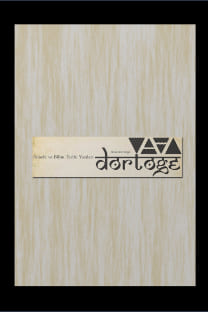David Lewis’in Karşıt-Olgusal Bağlılık Kavramında Zamansal Asimetri Meselesi
Olası Dünyalar Semantiği, Doğru-Yapıcılar, Doğa Kanunu, Mucizeler
The Issue of Temporal Asymmetry in David lewis’s Concept of Counterfactual Dependence
Possible Worlds Semantics, Truth-Makers, Laws of Nature, Miracles,
___
- Arntzenius, F. (1993). The Classical Failure to Account for Electromagnetic Arrows of Time. In G. Massey, T. Horowitz & A. Janis (Eds.), Scientific Failure (pp. 29-48). Lanham: Rowman and Littlfield.
- Bennett, J. (1984). Counterfactuals and Temporal Direction. The Philosophical Review, 93, 57-91.
- Craig, C. (2016). Thermodynamic Asymmetry in Time. The Stanford Encyclopedia of Phi- losophy, (Winter 2016 Edition), Edward N. Zalta (ed.). Retrieved from https://plato. stanford.edu/ archives/win2016/entries/time-thermo/
- Elga, A. (2000). Statistical Mechanics and the Asymmetry of Counterfactual Dependence. Philosophy of Science, 68(Supplement), 313–324.
- Fine, K. (1975). Review of Lewis’s Counterfactuals. Mind, 84, 451-458.
- Frisch, M. (2005). Inconsistency, Asymmetry and Non-Locality: Philosophical Issues in Classical Electrodynamics. New York: Oxford University Press.
- Hawking, W. S. (1994). The No Boundary Condition and the Arrow of Time. In J. J. Hal- liwell, J. Pérez-Mercader & W. H. Zurek (Eds.), Physical Origins of Time Asymmetry (pp. 346-357). Cambridge: Cambridge University Press.
- Huw, P. (1996). Time’s Arrow and Archimedes’ Point. Oxford: Oxford University Press.
- Huw, P. & Weslake, B. (2009). The Time-Asymmetry of Causation. In H. Beebee, C. Hitchcock & P. Menzies (Eds.), The Oxford Handbook of Causation (pp. 414-443). Oxford: University Press.
- Jackson, F. (1977). A Causal Theory of Counterfactuals. Australasian Journal of Philosophy, 55, 3-21.
- Lewis, D. (1973). Counterfactuals. USA: Basil Blackwell Ltd.
- Lewis, D. (1979). Counterfactual Dependence and Time’s Arrow. Noûs, 13, 455- 476.
- Lewis, D. (1986a). On the Plurality of Worlds. USA: Blackwell Publishing.
- Lewis, D. (1986a). Philosophical Papers II. New York: Oxford University Press.
- North, J. (2003). Understanding the Time-Asymmetry of Radiation. Philosophy of Science, 70, 1086–1097.
- Popper, K. (1956). The Arrow of Time. Nature, 177, 538.
- Slote, A. M. (1978). Time in Counterfactuals. The Philosophical Review, 87, 3-27.
- Stalnaker, R. (1968). A Theory of Conditionals. In N. Rescher (Ed.), Studies in Logical Theory (pp. 98-112). Oxford: Blackwell.
- ISSN: 2146-7064
- Yayın Aralığı: Yılda 2 Sayı
- Başlangıç: 2012
- Yayıncı: Nobel Akademik Yayıncılık
İbrahim Müteferrika ve Yeni Astronomi
İbrahim MÜTEFERRİKA, İnan KALAYCIOĞULLARI
Fizyonominin Edebiyata Yansımaları
Michel Foucault’nun Magritte Yorumu ve Sözcük Nesne Kopukluğu
Portekiz’de çağdaş Bilim Tarihiyle İlgili Görüşler
Melek Dosay GÖKDOĞAN, Yavuz Selim DOKUMACI
Bir Spekülatif Felsefenin Ana Hatları: çember ve Varolma(ma) Alanları
Toplumsal Cinsiyet ve Bilim İlişkisi Üzerine Bir Değerlendirme
Seda ÖZSOY, Ümit ÖZTÜRK, Yakup KAHRAMAN
Bilim Tarihinde Araştırma ve Yazma Yöntemi
Remzi DEMİR, İnan KALAYCIOĞULLARI
İbrahim Müteferrika Öncesi İstanbul’da Yahudi Matbuatı
İbrahim Müteferrika ÖNCESİ, Selin KARA
Konya Örneği Bağlamında Tinsel Üretim ile Mekânın Karşılıklı Yapılandırıcı Etkilerinin İncelenmesi
